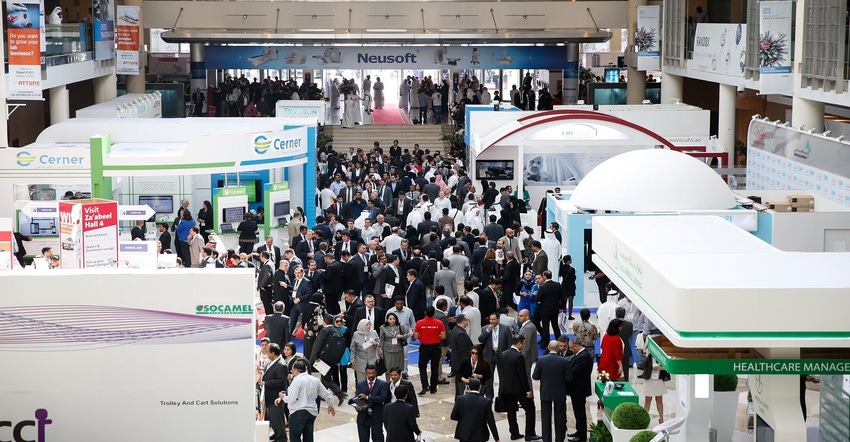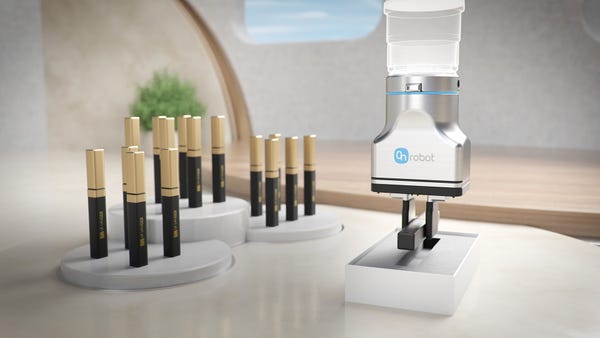Advanced end effectors can make cobots more useful in solving the labor shortages faced by US manufacturers.
May 24, 2021

OnRobot is helping manufacturers solve production issues by developing grippers and other end effectors that make robots effective. The need for cobots – those robots that work well with humans – was already growing before COVID-19. When the pandemic hit, the need for automation accelerated.
Another driver for cobot adoption is the relatively low cost and uncomplicated deployment requirements that put these machines within reach of small- to medium-size enterprises (SMEs). We caught up with Kristian Hulgard, general manager of the Americas division at OnRobot, an end effector company, to learn about the current market for cobots and the impact end effectors have on the market.
Design News: What are the challenges that prompt your customers to invest in cobots? Labor shortages? Pandemic-related social distances that result in fewer people in the plant?
Kristian Hulgard: Labor shortages are a major challenge for US manufacturing, especially among SMEs. There are challenges around finding temporary labor for all sorts of roles from machine tending and welding, through press brake operation and inspection. Cobots and lightweight industrial robots provide SMEs with an affordable way to address labor shortages while improving ergonomics for existing staff.

The pandemic has driven interest in collaborative automation because it provides an affordable way for companies to comply with social distancing regulations. Following a risk assessment, cobots can be deployed next to humans – say, on an assembly or inspection line – without additional fencing or guarding. So, by alternating between humans and cobots, facilities can maintain production while simultaneously meeting their social distancing obligations. However, if anything, the pandemic accelerated preexisting trends in the adoption of cobots and lightweight industrial arms, interest in remote access tools, and of course, challenges around labor availability, all of which existed before Covid-19's emergence.
OnRobot is determined to make automation as quick and easy to deploy as possible, regardless of the end user’s previous experience –or none—with automation. This means the plug-and-play end-of-arm tooling, easy-to-use software, and integration across all our products and all major robot brands. We aim to remove the challenges associated with traditional automation and bring robots to companies of all sizes.

DN: In developing end effectors, do you work with robot companies, responding to their specific needs, or do you bring products to market based on the needs you’re seeing across the market?
Kristian Hulgard: Both and more. We make a comprehensive analysis when designing and developing every new product. The analysis includes working closely with end-users, partners, and robot manufacturers to address their requirements.
For example, we work with robot manufacturers to ensure that our products provide plug-and-play functionality with leading robot brands. We also listen to our customers to ensure that our products meet their application requirements. And we work with our partners to ensure that all our products can perform effectively in demanding industrial applications.
DN: How are integration issues evolving for end effectors? Are most of your end effectors created to integrate with multiple robot customers?
Kristian Hulgard: Integration was a huge challenge in the past, especially for electric, software-driven end-of-arm tooling. OnRobot’s One System Solution solves this problem for end-users by providing what we call “One system, zero complexity”. This means that customers get the same experience – from physical installation, to programming the tools – no matter what brand of robot they use or what type of collaborative application they want to set up.

SMEs, in particular, should look for end-of-arm tooling that provides broad compatibility with all leading robot brands, as it’s a way of future-proofing your investment.
DN: What is the single most pressing technical challenge you face in developing end effectors?
Kristian Hulgard: It’s almost impossible to pick a single biggest technical challenge in gripper development as every gripper we develop is the result of our R&D team overcoming numerous challenges. For example, OnRobot has solved the technical challenges associated with software integration between our products and all major robot brands through the One System Solution.
OnRobot has also overcome numerous technical engineering challenges to produce technologies such as the all-electric vacuum gripper, the Gecko gripping technology, and an electric magnetic gripper with unique adjustable force and grip detection features that provide users with unprecedented levels of control. Our R&D team pushes the limits of what can be achieved with easy-to-use collaborative grippers, every time we release a new gripper it is the result of overcoming several technical challenges. When developing grippers for specific applications, such as palletizing, for example, we incorporate payload, cost, design, compatibility, the specifics of the application, and other potentially limiting factors into our design.
DN: How do you see safety issues evolving in the coming years?
Kristian Hulgard: I see safety issues becoming less and less of an issue as more and better technology is introduced to the market to solve the safety part of robot deployments. I predict that in the future, safety won’t even be a major point of discussion because all applications installed with “standard” hardware and software will be safe to use anywhere.
Rob Spiegel has covered manufacturing for 19 years, 17 of them for Design News. Other topics he has covered include automation, supply chain technology, alternative energy, and cybersecurity. For 10 years, he was the owner and publisher of the food magazine Chile Pepper.
About the Author(s)
You May Also Like





